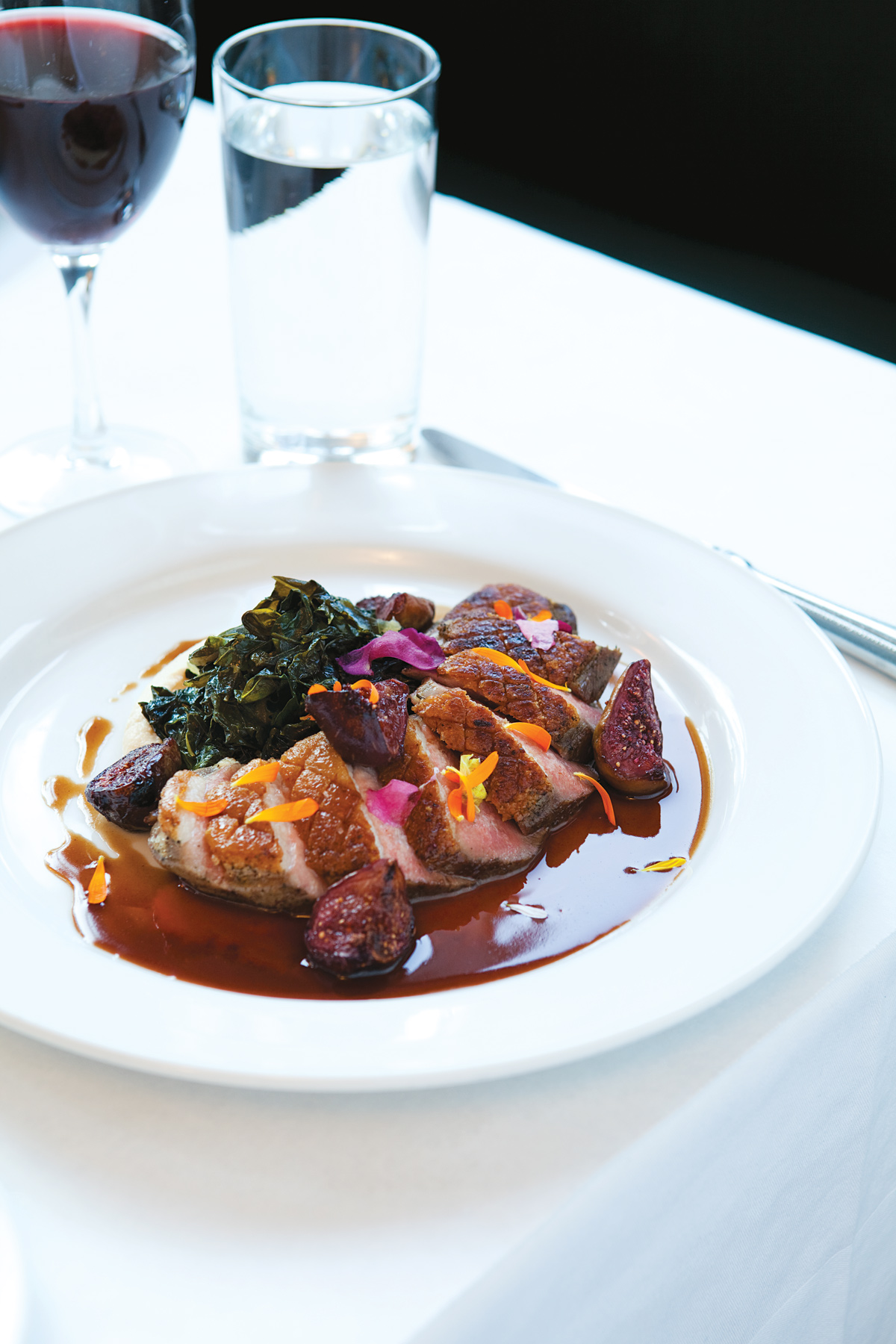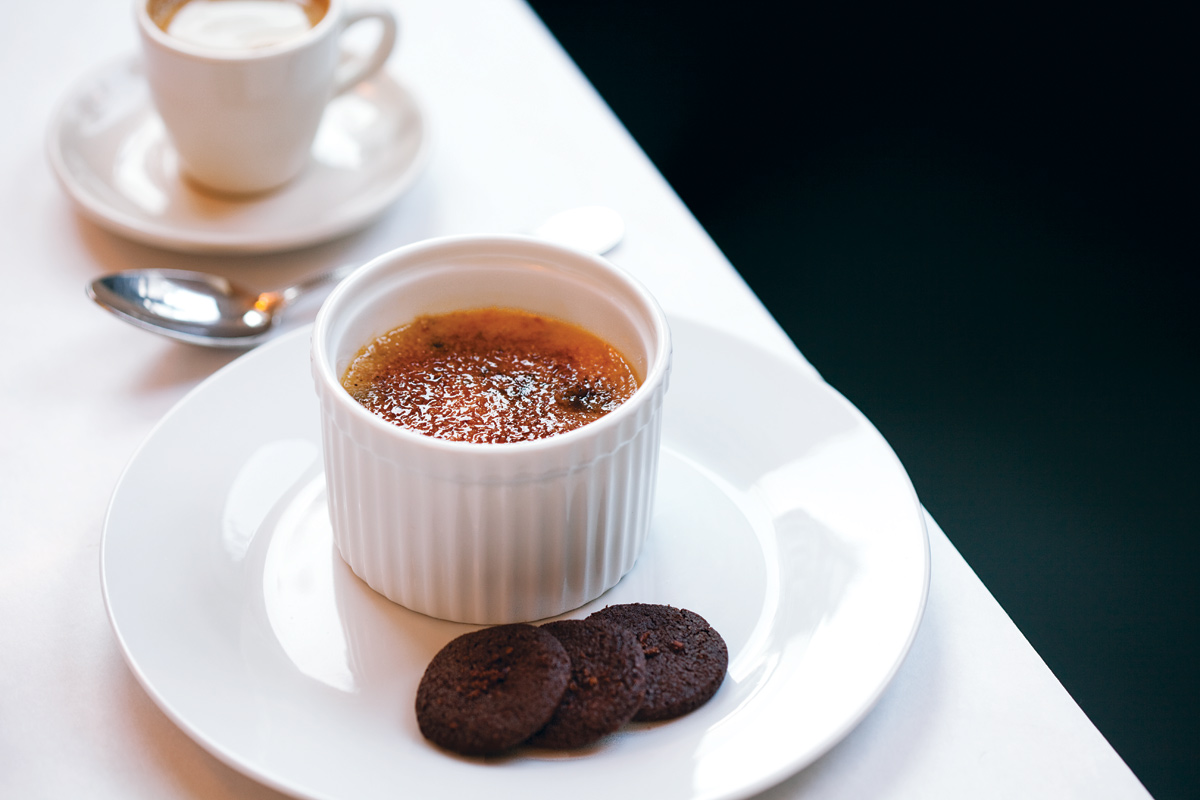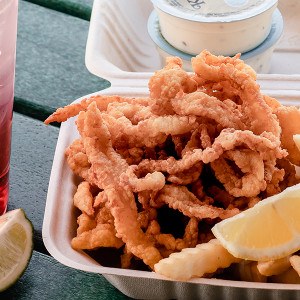Dining Out: Beacon Hill Bistro

Photograph by Keller + Keller
A NEIGHBORHOOD RESTAURANT has a few duties to its regulars: Recognize them; welcome them; give them reliable dishes they can order again and again knowing they’ll be as good as they were the last time, plus a few new things for variety. Meanwhile, a hotel restaurant has a couple of duties: Welcome guests as if they were regulars, and provide food that will appeal to a wide range of tastes yet also be reassuring and familiar.
Beacon Hill Bistro has managed to do double duty for 10 years, tucked into a room in the heart of Beacon Hill’s main drag that attracts well-to-do neighborhood residents and tourists, including the ones who stay in the cozy boutique hotel above it. I love the room, which seems exotic and vaguely Parisian; when I first reviewed the restaurant six years ago, I described it as resembling a car on the Orient Express.
But at that time, I didn’t love the food. Enter new chef Matt Molloy, who came onboard in August to replace departing chef Jason Bond, who has opened his own place in Cambridge. A seven-year veteran of Newton bistro Lumière, Molloy knows how to cater to demanding and affluent locals, and he’s obviously succeeding in his new job: Whenever I’ve dined there recently, I’ve seen plenty of Hill residents. And as far as I could tell from nosing around their tables, they were tucking into the same tried-and-true dishes that I found to be the high points of the new menu. (Maybe they got treated better than I, a newcomer; it was uniformly hard to get a server’s attention, even when the place wasn’t busy. At one point, after I’d asked three times for the same thing and been told, “Right away” with no follow-through, our waiter put his hand on my shoulder and, with a patronizing “It’ll all work out, bud” manner, promised to get whatever it was for us.)
Even with an ambitious new chef who’d like to make his mark, Beacon Hill Bistro won’t turn into a destination restaurant. That’s not in its DNA. What Molloy has done is upgrade the ingredients and modestly update the offerings. That’s all the owners are up for, I’d wager. So the menu plays it mostly safe and delivers lackluster dishes — alongside a couple of standouts with clear, strong flavors that make you think, This is a chef I need to know about.
The food isn’t flashy. This is Beacon Hill, after all. And Molloy has been schooled in chef Michael Leviton’s philosophy at Lumière (he ran the kitchen while Leviton cooked at Persephone), where local ingredients and technique come first and a quiet, confident sense of luxury dominates. Molloy hasn’t yet developed that confidence. His execution is uneven, particularly with fish, and he sometimes seems careless in gauging the overall balance of flavors in a dish. An entrée of seared scallops with corn purée, lobster, bacon, and potato ragout ($29) featured overcooked, tough scallops, and was so overwhelmed by smoke and salt from the bacon and by cream — Molloy described it to me as a deconstructed chowder — that I wondered if anyone in the kitchen had actually tasted a completed version of the dish before it went out. (It has since been changed.) A generous fillet of sautéed Chatham cod ($27) tasted salty and greasy, with unpleasantly fatty skin, but the accompanying shell-bean ragout with Swiss chard and a mild-flavored romesco sauce was good enough that Chez Panisse itself would be proud to serve it.
Then there’ll be something in which every part is done absolutely right, like the gravlax appetizer, with house-cured salmon and a salad of roasted beets, radish, and watercress ($14), or the plate of house-made pâtés ($14); both feature top-notch ingredients and technique. The line between dull and expert execution of a classic can be fine, and here Molloy is decidedly on the expert side. I could eat the gravlax every night. Made with Scottish salmon, my favorite source of Atlantic salmon, it’s cured in citrus, salt, and sugar. It’s as moist and satisfying as a main course of salmon (and more so than a lot of the ones offered around town). The accompanying salad was a refreshing counterpart, not just something perfunctory plunked on the plate. Similarly, the pâté plate’s duck rillettes with onions and garlic, and rustic rabbit pâté with plenty of pork fat, were both moist and fresh. (The pâté selection varies nightly.) Clearly, Molloy can revive warhorses.
Sometimes, though, a dish’s main ingredient is prepared just that carefully, but the details around it are a slight letdown. An appetizer of salt cod brandade croquettes ($13) was oily and heavy, the chorizo aioli not as pungent and peppery as you’d like to counteract the grease and salt. But the salt cod was as pure and delicious as any I’ve had. Indeed, it was homemade and, as with the gravlax and the pâté, a reminder of how much better classics are when made with real expertise. A better choice than the croquettes: steak frites ($29). The meat, Wolfe’s Neck strip steak, was exemplary and full of flavor, and I thought Molloy’s preference to cook it a bit past medium-rare was judicious, even if finicky guests wanted it pinker. The shoestring fries, though, strewn with chives and parsley, needed two more minutes in the fryer to make us want to eat more than just a couple.
Molloy is great with duck, including the dish I still want to go back for (though I can’t, because it was a special, part of a retrospective of food trends in honor of the restaurant’s 10th anniversary): duck sous-vide style. Why “style”? Because Molloy doesn’t have all the fancy equipment for true sous-vide. So he sealed duck breast in a plastic bag with duck fat and herbs, and simmered it slow and low for a few hours — and produced a much more persuasive argument for sous-vide than I’ve had, particularly for duck. A different preparation of duck breast with herbes de Provence ($28, pictured right), cooked on a stovetop and served with a turnip-almond purée, was a bit drier but also good.
I’ll go back for the duck, but not for any of the fish other than the gravlax, and not for the pasta — specifically a very weird lasagna ($25) of a few cardboard-crunchy sheets of pasta, vegetables, and mustard cream baked into an unpleasant custard in a ring mold and arranged, strangely, over lentils. And not for most of the desserts, which are forgettable even as you eat them, nor the house-made ice creams (three scoops for $6.50), which are largely unremarkable.
To be fair, Molloy inherited the lasagna. He’s brought with him skill and a respect for ingredients, and the results are occasionally memorable. How much more memorable he’ll be allowed to get is an open question, but this bistro will likely go on as the pleasant, middling place it is.
Beacon Hill Bistro, 25 Charles St., Boston, 617-723-7575, beaconhillhotel.com/bistro.

Photograph by Keller + Keller

Photograph by Keller + Keller

Photograph by Keller + Keller


